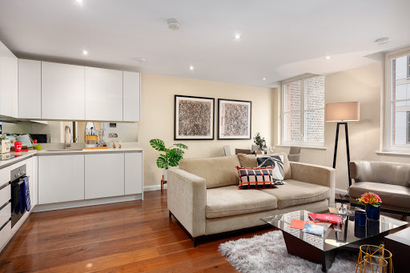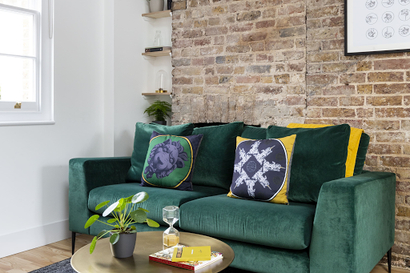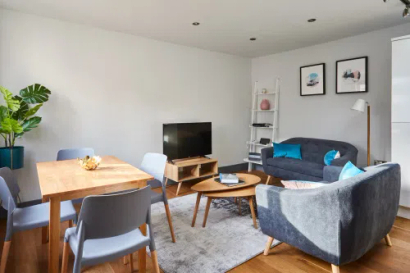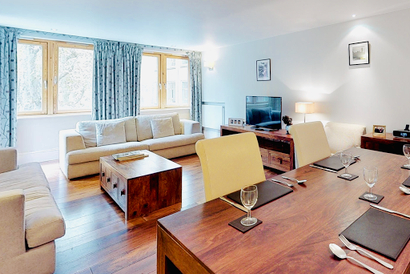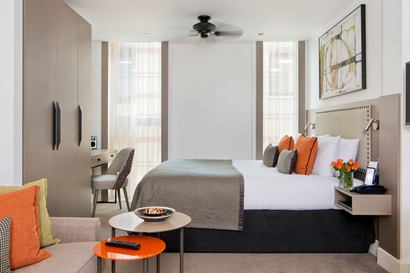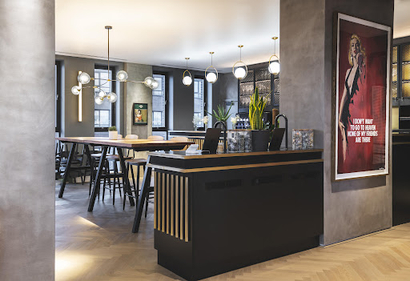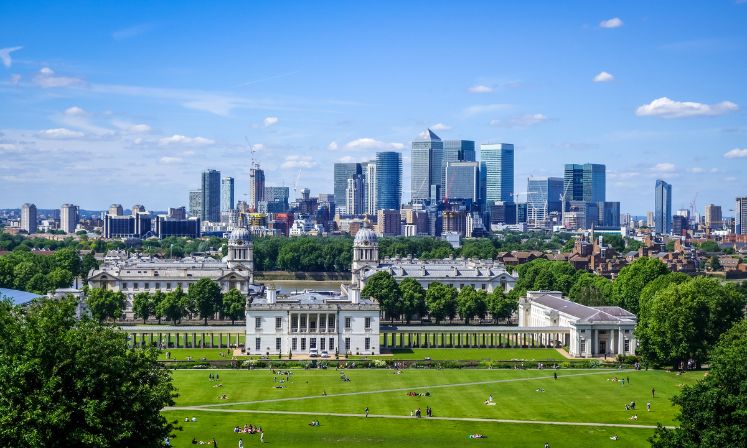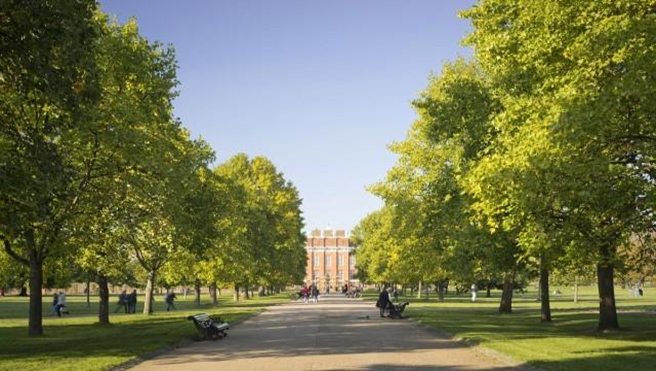Serviced Apartments Covent Garden
Top Serviced Apartments in Covent Garden
One of London’s most famous locations, Covent Garden serviced apartments are the ideal location for staying in London. With stylish interiors, ample space and featuring homely comforts, Covent Garden is one of London’s most coveted areas - famous for its bars, restaurants, and of course theatre. As one might expect, accommodation in Covent Garden is some of the most sought after in the city - especially as the district is so central and close to so many major landmarks. Naturally, anyone staying in such a highly esteemed area will expect accommodation that meets the highest of standards, which is why TheSqua.represent only the finest Covent Garden accommodation available, ensuring the highest level of customer satisfaction.
While there are many places to stay in Covent Garden, our portfolio is full to the brim with apartments in all the right streets and corners that make up the area. From short stay apartments to long term rentals, there are many serviced apartments in Covent Garden that will tick all your requirements for business and leisure.
A few of the top serviced apartments in Covent Garden include:
- Urban Chic Covent Garden
- Grosvenor House Suites
- St Paul’s Apartments
- Lamb Conduit Street
- Shaftesbury Mansions
- So Archway
- Garrick Street
- Rathbone Place
All of the Covent Garden corporate apartments feature an array of luxuries and modern conveniences, including the latest home entertainment systems, chic contemporary decor and most conveniently of all - full kitchen facilities. Furthermore, our Covent Garden serviced apartments also offer many of the benefits usually associated with hotels, including room cleaning, reception, and concierge where available.
Filters
Price Range
Bedrooms
Bathrooms
Amenities
Essentials
Kitchen
Facilities
Safety
Property
Features
Sustainability
Distance From City Center
Popular Neighborhoods
Showing 1-8 of 28 apartment buildings
Can't find what you are looking for?
We have a number of other properties not yet listed on the site.
Frequently asked questions
Things to know before booking serviced apartments in London
There are over 34 serviced apartments in Covent-Garden London with more being added every day. In total, TheSqua.re has over 250,000 apartments across the globe that are waiting to be booked. Book Now .
The best 5 and 4 star serviced apartments in Covent-Garden London are Chancery Lane Apartments by MySquare. Sterling House in Chancery Lane Holborn. Bloomsbury Apartments. Holborn Apartments, London. Tavistock Place Apartment in Bloomsbury.
Prices start from £49 per night and increase from there. Bear in mind that the type of apartment and number of guest will affect the overall price. Book Now .
To see a selection of Covent-Garden London offers, please visit our offers and coupon page .
Choose a part of Covent-Garden London you want to visit and search for the perfect stay for you using our easy search tool. Begin your search here .
Some of the apartment buildings in Covent-Garden London will offer bed and breakfast or gym membership, whereas others may provide them with an extra charge. The apartment listing will make that clear. Other services include airport pick-up, meet and greet and so much more. Book your stay here for the full TheSqua.re experience.
That depends on the policy of the apartment/building management. You may have to enquire first when making your booking in Covent-Garden London.
Serviced apartments in Covent-Garden London have all the features of home, are centrally located and have other astounding attributes that make them better than hotels, as covered here.
You may also be interested in
Top neighbourhoods
Apartments By Bedroom Type
Browse By Type
Top Serviced Apartments in Covent Garden
This is one of the go-to areas to shop and spend in London's West End. Covent Garden itself centres on the elegant Piazza that is home to fashion stores, craft stalls in the Apple Market, and the Royal Opera House. For youngsters and casual strollers, there are street entertainers that perform next to St. Paul’s Church while the London Transport Museum is close by which displays a range of vintage vehicles. Around the area, upscale restaurants serve divine European cuisines, and the theatres of the West End draw in the hungry crowds looking for a few hours to enjoy an award-winning play or musical.
It’s an old place that is full of new things. The Apple Store here is now one of the busiest shops in the area, while the quaint market and Piazza have a variety of luxury goods and homely items that can complete any trip. The restaurants that line the area serve global cuisines so fussy eaters can find exactly what they’re looking for. The theatres that dominate the proceedings are part of the weekend magic. The crowds can largely be attributed to pre-theatre or post-theatre audiences that are looking for a quick bite to eat or a special something to add to their day of excitement.
In terms of businesses, a few swanky offices can be found. These can resemble anything from digital marketing agencies to law firms and accountancies. The central location guarantees easy access around the city with many red buses, black taxis and tube stations that can zip guests and visitors from one place to another in a matter of minutes.
History of Covent Garden
All parts of London have their history and Covent Garden is no different. The area itself was fields until it became the centre of an Anglo-Saxon town called Lundenwic in the 7th century. After its abandonment, its fields returned until 1200 when part of it had been walled off by the Abbot of Westminster Abbey for use as arable land and orchard. This land was referred to as "the garden of the Abbey and Convent", and much later "the Convent Garden". The Dissolution of the Monasteries in 1552 enabled the plans to go ahead and Inigo Jones began to build fine houses to attract wealthy tenants. He also designed the Italianate arcaded square along with the church of St Paul's, both of which are there today (although they have been updated in the centuries since). In fact, the design of the square had a significant influence on modern town planning and was used as a prototype for future projects.
In 1654 a small open-air fruit-and-vegetable market had developed on the south side of the square, as well, as taverns, theatres, coffee-houses and brothels. It was so notorious for its brothels and violence that an Act of Parliament was drawn up to control the area. This is where Charles Fowler's neo-classical building was erected in 1830 to organise the market. Other buildings were added over time.
As traffic was soon becoming a problem, in the 1960s the market relocated to the New Covent Garden Market. In 1980, the central building reopened as a shopping centre containing cafes, pubs, small shops, and a craft market called the Apple Market, along with another swanky market held in the Jubilee Hall.
Business Life in Covent Garden
For business travellers, Covent Garden is the area where they can book accommodation and unwind. Retailers, pub landlords, digital marketers, lawyers and sales representatives do business here and find that the vibrant atmosphere enables them to engage even better with their consumer base and give the most efficient service. With thousands of visitors to Covent Garden every day, the millions made every year by the businesses that put up shop here is huge to say the least.
Our corporate apartments in Covent Garden are also part of the business life for those who book short or long terms stay in the shopping and entertainment district. Our guests can find their own apartment amongst our diverse portfolio and arrive into a living space where everything is taken care of. Our homely amenities ensure they can roll in after an exhausting day and unwind with their fully equipped kitchen, flat screen TV and free Wi-Fi. For those that don’t want to go on a short commute to work or simply want to take advantage of the spacious living areas, they can use the free Wi-Fi to work remotely and spread themselves out over the sofa as opposed to a cramped office space.
Our deluxe accommodations can be found close to the Piazza, theatres and transport connections too. This convenience means that long business days can have an appropriate start via fast and nearby transport services, whilst also having a great finish via the theatres, restaurants and shops. Business life has never been better in Covent Garden.
Where to Stay in Covent Garden
Covent Garden is arguably the most popular area in the West End for anyone seeking an evening of high culture, great food and maybe a cocktail or two. Inevitably, this means that local accommodation is in high demand - especially during the height of the theatre season. Accommodation can be found along the Strand, which offers the best of both worlds when it comes to proximity to Covent Garden’s attractions, as well as ease of access to other nearby districts such as Leicester Square or Trafalgar Square.
Alternatively, anywhere along Bow Street, Russell Street or Bedford Street will put visitors in the heart of the district. Whilst Covent Garden is not a large area, those looking to stay in the area will find plenty of options when it comes to accommodation. Serviced apartments in Covent Garden can be found in all of the key areas and are available in a variety of formats - from self-contained functional studios to luxury penthouse apartments.
Facts about Covent Garden
Covent Garden was originally known for its historic importance as a place of markets and trading. However, in modern times the West End neighbourhood has flourished into a bastion of culture, offering visitors everything from theatre and ballet to world-class fine dining. As one may expect, this transition has led to the area being imbued with a rather interesting history. Below are a few facts about Covent Garden that may be surprising:
- Covent Garden derives its name from the French word covent, or Convent, due to essentially being a garden for monks from Westminster Abbey.
- Covent Garden was the first piazza in London experiences in London, based on the famous Place des Vosges in Paris
- There has been some kind of market in Covent Garden since 1656. The current market being built in the 1830s.
- Covent Garden welcomes almost 50 million visitors every year
- The neighbourhood has over 60 pubs and bars - both traditional and modern.
- The Victorian-era Covent Garden market was once scheduled for demolition in the 1980s, but following protests from Londoners it was repurposed into a modern shopping destination
- Alfred Hitchcock’s 1972 film, Frenzy, the director’s second to the last film, was mainly filmed in Covent Garden.
- The famous diarist, Samuel Pepys, once recorded a trip to Covent Garden, during which he witnessed a Punch and Judy puppet show
Things to Do in Covent Garden
Covent Garden is one of the most exciting and diverse neighbourhoods in London - day or night. In fact, it is possible to spend all day exploring the attractions of Covent Garden, then going a night out to enjoy a meal, cocktails and a show without leaving the neighbourhood.
Q. What are the most popular things to do in Covent Garden?
During the day, most visitors to Covent Garden like to explore the markets or enjoy lunch in the Piazza - which usually has street performances and music. There are also several museums dedicated to local history as well as industries such as movies and transport.
Q. What is the best way to spend 24 hours in Covent Garden?
Covent Garden is the perfect destination for both daytime and evening. Visitors can enjoy a morning looking for bargains at one of the local markets, before watching street performers in the Piazza or heading to one of the historic pubs for lunch. For the evening time, a trip to the Royal Opera House to see a show with dinner is one of the true pleasures in life.
Q. Are any other landmarks close to Covent Garden?
The great thing about Covent Garden is that it is so central that many of London’s most famous landmarks are within easy reach. In fact, Leicester Square, Trafalgar Square, the South Bank and Oxford Street are within easy walking distance and each offers another iconic London landmark.
Q. What are the most family-friendly things to do in Covent Garden?
Covent Garden is the ideal place for families as most of the attractions are family-friendly - even the Royal Opera House’s programme includes ballet and opera suitable for children. There are also plenty of street performers in the piazza, which make for great family entertainment. Finally, the museums in the area have plenty of large scale interactive exhibits, which are great fun for all ages.
Places to Visit in Covent Garden
Covent Garden is a central neighbourhood with a rich history that is known for its wide range of cultural attractions. As such, visitors to the area will find they do not need to travel far to find something they will enjoy. Below is a selection of the top places to visit in Covent Garden:
- The Royal Opera House - London’s premier theatre, offering a programme of ballet and opera as well as several restaurants.
- London Transport Museum - A quirky interactive museum that explores the importance of transport in London and its role in the capital’s expansion.
- The Apple Market - Iconic Victorian-era market that houses around forty stalls, ranging from arts and crafts to antiques. A must for first-time visitors.
- Jubilee Market - Known as the general market, Jubilee Market offers everything from hand made cards to flowers and local produce.
- Covent Garden Piazza - Famously London’s first piazza was based on the European model. Home to street performance and cafe terraces.
- St Paul’s Church - Not to be confused by the more famous cathedral, St Paul’s Covent Garden was designed by the famous architect, Inigo Jones and is known for its striking facade.
- London Film Museum - Dedicated to the British film industry and featuring numerous props and exhibits from popular movies.
- Theatre Royal, Drury Lane - One of London’s most famous theatres, which has been entertaining Londoners since 1663 and offers tours of its stunning interior as well as a full programme of drama and entertainment.
- The Lamb & Flag - A historic Georgian pub that was once known for bare-knuckle fights and being frequented by Charles Dickens.
Places to Eat in Covent Garden
Covent Garden really is a foodie’s paradise - with a huge array of restaurants, bars and cafes offering all manner of international cuisine. Of course, being in the heart of the theatre district, Covent Garden is known for its high-class dining, with venues such as Frenchie, The Petersham, Cora Pearl, The Oystermen and Balthazar being popular places for sophisticated a pre-show dining experience.
However, Covent Garden isn’t all fine-dining and Michelin stars - there are also plenty of less formal places to enjoy a quick bite, in cafes such as Abuelo, Avobar and Chez Antoinette, as well as gastro pubs such as the Marquess of Anglesey, the White Lion or the Punch and Judy. Alternatively, there are also fast food options, such as Shake Shack or Five Guys.
Street Food in Covent Garden
Despite its reputation for high class and fine dining, Covent Garden also has plenty to offer when it comes to street food - which is ideal for those looking to dine out on a budget, especially as a night out at the theatre can be expensive enough without adding on the cost of an expensive meal. Flesh and Buns is known for its tasty Korean-inspired burgers and sandwiches, similarly, On the Bab also offers simple Korean street food. Continuing the theme of Asian cuisine, there’s also Seekh Kebab at Tandoor Chop House, or for something more European, Homeslice offers takeaway pizza by the slice.
Shopping in Covent Garden
Covent Garden is traditionally associated with theatre and markets, but regular visitors to the area will also be aware that it is an excellent shopping location - particularly noted for its offering of fashion stores and boutiques. Some of the most widely recognised brands represented are:
- Pandora
- Fred Perry
- Les Nereides
- Claudie Pierlot
- Sandro
- Levis
Known as something of a haven for luxury brands and lifestyle products, there are also plenty of popular lifestyle and confectionary retailers, including Moleskine, Africology, Hotel Chocolat and The Florist at Petersham Nurseries. Of course, those looking for even more retail therapy also have the option of taking the short walk up to Oxford Street.
Transportation in Covent Garden
London benefits from one of the most comprehensive public transport networks of any city in the world. Thanks to its central location, transportation in Covent Garden is never an issue. For traversing the central areas, the London Underground is one of the fastest and most convenient ways to get around. Covent Garden is served by the Piccadilly Line, though it should be noted that the underground station is only accessible via stairs or escalator, which means those who have mobility issues may have to enter Covent Garden by another nearby tube station. Others in the vicinity of the West End include:
- Oxford Circus
- Covent Garden
- Piccadilly Circus
- Leicester Square
- Charing Cross
- Holborn
For those who prefer to take the bus, Covent Garden can be reached by the number 9 and 98 routes, which then require just a short walk to the centre of the district. Covent Garden is also within easy walking distance of both Waterloo and Charing Cross, so access via overground rail is also an option.
London’s Oyster card payment system is usually the best and most cost-effective means of paying for transport - particularly for those planning to make regular trips - a single trip to zone 1-2 will cost £2.40 whilst the equivalent single ticket is £4.90. Similarly, a zone 1 - 4 Travelcard will cost £13.10, whilst the Oyster is capped at £10.10.
Weather in Covent Garden
Covent Garden experiences the same weather as the rest of London and much of southern England. Whilst London will have distinct seasons throughout the year, the weather is notoriously unpredictable so those travelling to the city should always pack for rain or shine.
Winters can be cold, with the temperature dropping below freezing on the coldest months of January and February. However, by contrast, London weather in July is usually warm and dry, with temperatures reaching average highs of 24 degrees. Whilst August can be a little hotter, typically the city doesn’t experience temperatures high enough to make it uncomfortable. The month of September is often a good time to visit, as the weather is usually comfortable and the streets are a little less busy than they are in the height of summer.





